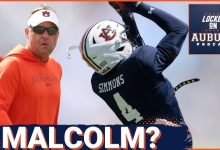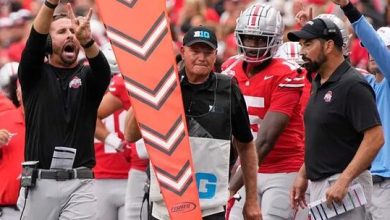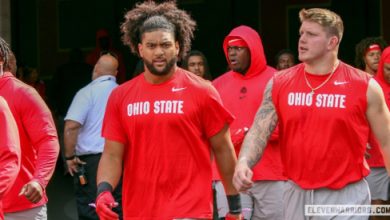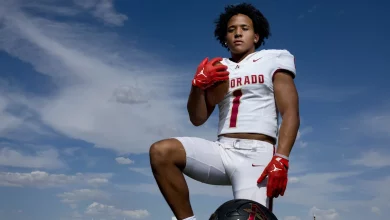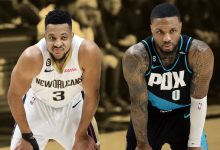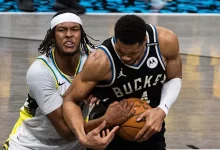Predicting Notre Dame’s next five commitments after DT target Alister Vallejo chooses Michigan

Notre Dame’s 2026 recruiting cycle took a hit when highly-rated defensive tackle Alister Vallejo opted to commit to the Michigan Wolverines. Vallejo, a blue-chip prospect, was expected to bolster the Fighting Irish defensive front for years to come. His decision leaves Notre Dame with a notable gap to fill in the trenches and raises questions about who the Irish will target next to maintain their competitive edge.
But Notre Dame is no stranger to overcoming recruiting setbacks. The program’s coaching staff, led by Marcus Freeman, has shown resilience and an ability to attract elite talent across multiple positions. In this article, we’ll predict Notre Dame’s next five commitments — players and positions they’re likely to prioritize to keep their 2026 class on track. This analysis blends roster needs, recruiting momentum, and current top targets.
1. Defensive Line: Targeting Another Impact Defensive Tackle or Defensive End
Losing Alister Vallejo leaves a clear void on the defensive front. The defensive tackle position is a critical spot in Marcus Freeman’s defense, where stopping the run and collapsing the pocket are essential. Notre Dame will almost certainly pursue another top defensive lineman, whether a tackle or an edge rusher, to maintain defensive line depth and talent.
Potential Targets:
- Tyler Garner (DT) — Garner is a top-tier defensive tackle prospect from Ohio who has Notre Dame in heavy pursuit. He offers a strong blend of size (6’3”, 295 lbs), explosiveness, and run-stopping ability. Garner’s physical traits fit Notre Dame’s prototype for a 3-technique defensive tackle, capable of disrupting offensive lines and creating pressure.
- Christopher Burgess Jr. (DE) — Already committed, Burgess Jr. is a 4-star defensive end with pass-rushing prowess and versatility. Notre Dame could lean on Burgess and add depth behind him with another high-impact D-lineman.
Why it matters:
The Irish defensive front is foundational to Freeman’s scheme. Replacing Vallejo is a priority to avoid holes in run defense and to maintain pass rush balance. A strong commitment here stabilizes the defense and signals to recruits that Notre Dame remains a destination for top defensive line talent.
2. Offensive Line: Securing More Depth and Star Power
Notre Dame’s offense relies heavily on a dominant offensive line to open running lanes and protect their quarterback. The 2026 class currently has some prospects in this group, but the staff will likely push for additional linemen, especially given the attrition and graduation of upperclassmen.
Potential Targets:
- Tyler Merrill (OG/C) — Merrill, a highly-rated interior lineman from Pennsylvania, is a prime candidate. He’s drawn interest from top programs for his size, technique, and toughness.
- Jake Lyman (OT) — Another lineman on Notre Dame’s radar, Lyman provides size and length at tackle, with the potential to develop into a starter early.
Why it matters:
A strong offensive line recruits pipeline ensures the team’s offensive identity and protects its skill players. Notre Dame has traditionally excelled in offensive line development, and reinforcing this position group remains a staple of their recruiting strategy.
3. Wide Receiver: Adding Playmakers to the Passing Game
The Irish passing game has been growing, and Notre Dame looks to add playmakers to their wide receiver corps. Speed, route-running, and size are key factors in targets for the 2026 cycle.
Potential Targets:
- Elijah Burress (WR) — A 3-star athlete who’s already committed, Burress’s explosiveness and football pedigree make him a player to watch. Notre Dame could look to complement him with additional receivers.
- Brycen Cole (WR) — Cole has emerged as a top WR target. His blend of size (6’2”), catching ability, and physicality make him an intriguing prospect.
Why it matters:
Expanding the passing game with versatile receivers helps Notre Dame’s offense keep defenses honest. Multiple receiver commitments give offensive coordinator Tommy Rees more weapons and flexibility.
4. Linebacker: Adding Speed and Versatility at the Second Level
Notre Dame’s defense traditionally features a strong linebacker corps that can cover ground, blitz, and make tackles. With some potential losses in this group over the next few seasons, targeting linebackers with a high football IQ and athleticism is crucial.
Potential Targets:
- Ethan LaFrance (LB) — A 4-star linebacker with excellent instincts and sideline-to-sideline range, LaFrance has been connected with Notre Dame for some time. His leadership and versatility make him a top priority.
- Kyron Carman (LB) — Known for his speed and coverage ability, Carman fits the mold of the modern linebacker who can drop into coverage or rush the passer.
Why it matters:
Linebackers anchor the defense’s versatility. Notre Dame will want players who can defend the run and contribute in coverage schemes, especially in the increasingly pass-heavy college game.
5. Defensive Back: Reinforcing the Secondary
Notre Dame’s secondary has been a focus in recent recruiting classes. The need for athletic, smart defensive backs who can cover tight ends and receivers and contribute to run support remains a priority.
Potential Targets:
- Cree Thomas (CB) — Already committed, Thomas brings size and physicality to the cornerback position.
- Kaydon Finley (S/CB) — A versatile defensive back target, Finley has size and ball skills that fit Notre Dame’s secondary scheme.
Why it matters:
The secondary must keep up with fast, athletic opposing receivers. Notre Dame’s recruiting emphasis here reflects an understanding that modern defenses need coverage versatility and toughness.
What Losing Vallejo Means for Notre Dame’s 2026 Class
Vallejo’s commitment to Michigan was a blow, but it’s not insurmountable. Notre Dame’s staff has a strong track record of reloading and finding diamonds in the rough after high-profile misses. The key will be maintaining recruiting momentum and continuing to develop relationships with other top prospects.
Notre Dame’s reputation as a premier destination — combined with a recent surge in national rankings and exciting on-field success — provides an advantage when pursuing blue-chip players. While Vallejo’s loss stings, it also sharpens the focus on other priority targets.
The Bigger Picture: Notre Dame’s Recruiting Strategy
Notre Dame’s approach under Marcus Freeman and offensive coordinator Tommy Rees emphasizes balance. They want to build a roster loaded with impact players on both sides of the ball who fit the team culture and can develop into NFL prospects.
This means:
- Pursuing multi-dimensional athletes who can contribute early.
- Balancing high-profile targets with under-the-radar prospects who fit the scheme.
- Building relationships with families, coaches, and communities to secure commitments.
Recruiting battles with Michigan, USC, and other national powers remain fierce, but Notre Dame’s national brand and academic prestige remain key selling points.
Alister Vallejo’s commitment to Michigan represents a challenge but also an opportunity for Notre Dame to double down on other prospects. Defensive line remains a top priority, with targets like Tyler Garner ready to fill that void. Simultaneously, Notre Dame is expected to continue adding offensive linemen, wide receivers, linebackers, and defensive backs to build a well-rounded class.
Ultimately, Notre Dame’s next five commitments will reflect a strategic mix of immediate contributors and long-term developmental players, all aligned with the program’s winning culture and identity.
For Notre Dame fans, the loss of Vallejo is disappointing but far from a derailment. The Fighting Irish coaching staff will respond with targeted recruiting efforts, looking to bring in a new wave of talent that can sustain and elevate the program’s success for years to come.


